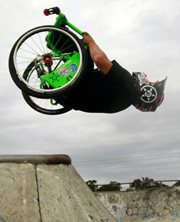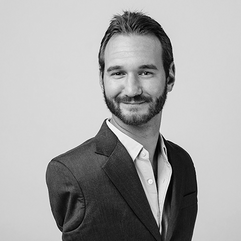The Power of Sustainable and Accessible Design in the Digital World - Part 1
- Paula Bruno
- Aug 4, 2023
- 9 min read
In our rapidly evolving digital landscape, technology continues to advance at an astonishing pace, reaching more people every day. As this technological revolution unfolds, it brings with it a multitude of challenges that need to be addressed. Two crucial challenges that have emerged on the forefront are accessibility and sustainability. The pursuit of creating a more inclusive society, where individuals with different abilities can thrive equally, and the urgent need to embed sustainability into the very fabric of our digital products and services.

At Evenness, we understand the significance of these issues and have made them the pillars of our mission. Our company is built on the principles of inclusion, accessibility, and sustainability, and we strive to empower individuals and organizations to embrace these values.
In our commitment to raising awareness and promoting meaningful conversations, we are delighted to present a series of interviews with distinguished specialists who are driving progress in the fields of accessibility and sustainability in digital innovation. These experts bring their expertise, passion, and deep insights to the table, offering a glimpse into the exciting advancements being made in these vital areas.
Through this blog post, we aim to highlight the importance of inclusion and accessibility, and how they intersect within the digital landscape. By sharing the thoughts and experiences of these exceptional individuals, we hope to inspire readers to recognize the transformative potential of technology and join the movement towards a more equitable and sustainable future.
Without further ado, let us introduce you to our extraordinary panel of specialists who are reshaping the landscape of sustainable and accessible digital innovation:
Meryl Evans - LinkedIn Top Voice in Disability Advocacy, Global Accessibility Consultant; Professional Speaker and Trainer in her company Maryl.Net.
Z Gaelyn-Levai - Adviser on Accessibility at Evenness
Soren Hamby - Senior Manager of UX Design and Digital Design at Benjamin Moore and Co.

In the ever-evolving realm of digital technology, where innovation knows no bounds, ensuring accessibility has become an indispensable cornerstone.
But what are the key factors that truly make a digital product accessible to everyone? How can designers and developers ensure inclusivity in their work?
To shed light on these crucial questions, we turn to specialists to help us. Meryl Evans emphasizes that true accessibility is not about achieving perfection for everyone, as what suits one person may not work for another. Instead, designers and developers should focus on providing options and choices, allowing users to tailor their experience. Universal design principles ensure that the product accommodates the highest number of users, promoting inclusivity.
Z Gaelyn-Levai emphasizes four key principles for creating accessible digital products: perceivable, operable, understandable, and robust. These principles focus on making products valuable, easy to use, comprehensible, and adaptable to future changes. By considering these aspects, designers can empower independence and inclusivity among users with diverse needs. Applying Web Content Accessibility Guidelines further enhances testing and evaluation, ensuring a truly inclusive digital landscape.
Soren Hamby highlights the importance of including people with disabilities in the design and development process of digital products. They emphasize the need to involve testers with diverse disabilities to ensure comprehensive accessibility. Soren recommends a mix of manual and automated testing, recognizing that automation is valuable but not a complete solution. Educating designers and developers about accessibility and the disability experience is crucial for creating inclusive products.
Famous and important people with disabilities: Stephen Hawking, Aaron Fotheringham, Andrea Boccelli, Nick Vujicic, Judy Heumann, Sen. Tammy Duckworth, Stella Young and Jillian Mercado. To know more about them click here and here.
Unfortunately, accessibility has often been relegated to the status of a legal obligation or an afterthought in product development. However, the true essence of accessibility lies in its potential to create inclusive experiences for users of all abilities, so,
How can we foster a mindset where accessibility is integrated from the initial stages of product development?
Z Gaelyn-Levai emphasizes the need for early integration of accessibility, challenging the prevailing afterthought approach in industries. They stress the importance of showcasing the value of change through cultural inclusion and representation, aligning words with actions to demonstrate genuine commitment to accessibility. The top three must-have features for enhancing accessibility in digital solutions include robust representation, ADA(Americans with Disabilities Act) compliance for internal websites, and action-oriented implementation of accessibility measures. Prioritizing these features fosters a more inclusive and accessible environment for all users.
To foster a mindset where accessibility is integrated from the initial stages of product development, Soren Hamby advocates for showcasing the value of change through cultural inclusion. They suggest incorporating diverse representation, language, and policies throughout the organization. Making accessibility a standard part of development practices and emphasizing its significance in the company's core values can also help embed accessibility into the team culture.
To ensure inclusivity from the start, Meryl Evans advocates involving people with disabilities during the ideation stage. This helps avoid afterthoughts and legal compliance issues. By having individuals with disabilities on the development team, the motto shifts from "Nothing about us without us" to "Nothing without us," ensuring continuous involvement and feedback.
Chey Mayer emphasizes three key tactics to foster early and thoughtful integration of accessibility in product development: education and awareness, engaging people with disabilities in the design process, and incorporating accessibility into design and development tools.

"Take a moment to think about your family and friends – how many of them have ADHD or other cognitive disabilities? How many suffer from arthritis or other disorders that cause chronic pain? I guarantee we all know someone who could benefit from more inclusive and accessible products. Creating this awareness within your team is a great place to start." - Chey Mayer
We also asked them:
What would you consider as the top three must-have features for individuals who are just beginning to revise their digital solutions to enhance accessibility?
One by one they all gave us great contributions. Meryl Evans suggests three must-have features for enhancing accessibility: smooth navigation for screen readers, providing multiple ways to interact with the product, and offering effortless channels for users to provide accessibility feedback. This approach ensures that users of all abilities can engage with the digital solutions.
As for Z Gaelyn-Levai, they answered the first thing should be "talking to your accessibility audience", that way we can get their feedback on the draft of the project, seeing if its inclusive, is functional. Second is ti give the user power to do what need to be done. The final one is that the product need to be adaptable.
For individuals beginning to enhance accessibility in their digital solutions, Soren Hamby advises focusing on education and getting familiar with accessibility guidelines. They recommend going broad and then diving deep into the specific areas they are working on, leveraging design systems to support accessibility efforts.
For individuals revising digital solutions to enhance accessibility, Chey Mayer recommends focusing on keyboard functionality, formatting content for screen readers, and designing with simplicity and predictability in mind.

"Making the product adaptable, it's really important to include the community in the very beginning on the conversation, this way you will get a lot more of respect, and a lot more money. Because we're probably gonna be consumers, for we know that that company or organization has our community in mind. It's like the LGBTQ+ community, if they support us we support them, if they are loyal to us, we are loyal to them, is the same thing." - Z Gaelyn-Levai
In this other question, we explore a notable digital product or solution that has successfully prioritized accessibility. Discover the key elements that contributed to its outstanding success in fostering inclusivity and user engagement.
Could you share a notable example of a digital product or solution that effectively prioritizes accessibility? What were the key elements that contributed to its success?
Regarding a notable example of an accessible digital product, Soren Hamby mentions their work with Waymo, a driverless ride-sharing company. By involving people with disabilities in the design process, Waymo introduced features like sound and visual cues for identifying approaching rides, enhancing the independence of users with different disabilities.
For Chey Mayer, a notable solution that has effectively prioritized accessibility is Otter.ai. This product can integrate with virtual meeting platforms, like Zoom, and it will automatically create a transcript of the live meeting. Otter.ai successfully addresses accessibility for a wide range of users. It can help folks with cognitive disabilities focus and retain information from work meetings by allowing them to revisit the transcript later to review what was said. Similarly, it supports people who are deaf or hard of hearing by allowing them to follow along with discussions as they are transcribed live.
Meryl Evans points to Stark as a leading example of a digital product that prioritizes accessibility. By integrating tooling and automation into their design process, Stark streamlines accessibility workflows for product teams, setting a positive example for an inclusive workplace.
Z Gaelyn-Levai presented some great examples, Microsoft was one of them, as she work with them in the accessibility team, MetLife insurance was their second example for having inclusion even on their website. Michigan State University is another example of inclusion, such as University of Florida for having a Certificate of Desabilities in Society, such as Dyslexia, bringing more attention and education about he subject.
In the fifth question, we delve into the intriguing intersection of sustainability and accessibility within the realm of digital products. Explore the dynamic relationship between these two crucial aspects and uncover the unique challenges and opportunities that arise when designing for a more inclusive and environmentally conscious future. For that we asked the following question:
How do you see the intersection of sustainability and accessibility in the realm of digital products? Are there any specific challenges or opportunities that arise from this connection?
For Chey Mayer, the intersection of sustainability and accessibility is highlighted, showing how accessible design addresses social equality, economic viability, and environmental protection. The challenge arises in speed to market, where awareness and education play crucial roles in prioritizing accessibility.
Meryl Evans highlights that Inaccessible designs often result in bloated code and slow performance, draining energy resources. Prioritizing accessibility leads to cleaner code and faster interactions, contributing to a more sustainable digital landscape.
Z Gaelyn-Levai reenforces their comment on making the product adaptable, invest in longevity on products as well. Making sure that what its created is not a problem, for example, new headsets when not adaptable, they need to create new ones so it's not sustainable then if instead they create one module that's adaptable to more consumers.
In the intersection of sustainability and accessibility, Soren Hamby highlights harm reduction, ensuring accessibility solutions are affordable and usable for all. They advocate for creating products that can repurpose existing technology, reducing the burden on people with disabilities to purchase expensive assistive devices.

"Disability tax is a quote tax because it takes longer for people that have disabilities often to do something. Some people can't afford to live in the suburbs and have to live in a big city because they need access to public transportation so that's more expensive. Or they have to get their house fitted with ramps and all kinds of accessibility requirements. When I think about sustainability, I also think about that, about making things that last really long time or take less new things to operate than everything else that is built out there." - Soren Hamby
Now, as the interview draws to a close, the focus turns towards the future of accessible digital products. Delve into the exciting possibilities and advancements that lie ahead in the ever-evolving landscape of technology. Explore the potential for greater inclusivity and discover the emerging trends that spark enthusiasm for a more accessible and inclusive digital world. We asked our last question:
As technology continues to evolve, what do you envision for the future of accessible digital products? Are there any emerging trends or advancements that excite you?
Z Gaelyn-Levai told us that what is exciting for them is when people from different companies sit togheter to talk and discuss various topics, working together to find solutions.
Looking to the future, Soren Hamby envisions more accessible products and hopes that accessibility becomes a central part of design and development curriculums. They anticipate greater cross-functionality between accessibility and user experience, with automation and innovative solutions enhancing digital accessibility for everyone. Ultimately, they emphasize the need for compassion and kindness to create a more inclusive world.
Chey Mayer envisions a future where accessible products drive innovative competition in the marketplace. The exciting potential of Artificial Intelligence and Augmented/Extended Reality in providing real-time captions, translations, and immersive experiences opens up new possibilities for accessibility and inclusion.
Meryl Evans envisions an exciting future for accessible digital products, particularly in the integration of artificial intelligence. However, challenges like addressing bias and ensuring representation for underrepresented groups need attention. Meryl cites Be My Eyes as a promising example of AI integration in accessibility. The platform utilizes AI to assist users, but it also connects them with human volunteers when needed. This seamless blend of AI and human support showcases the potential of AI in enhancing accessibility.

"It's the one everyone is talking about. The use of artificial intelligence. Automatic captions use artificial intelligence. The automatic captions are not perfect, but they opened the door wide for me and made me feel more included." - Meryl K. Evans
As we embark on this exciting journey of new ideas and creations in technology and in the web3 world, it is imperative that we recognize the importance of accessibility. The true power of technology lies not just in its capabilities but in its ability to reach and empower every individual, regardless of their abilities or limitations.
By fostering a mindset of early integration of accessibility in product development, engaging people with disabilities in the design process, and incorporating inclusive features, we can pave the way for a more inclusive and efficient digital landscape.
In closing, we extend our heartfelt gratitude to the experts who generously shared their valuable insights on accessibility in the digital realm. Your expertise and passion have shed light on the significance of inclusive design and its transformative impact on the lives of individuals with disabilities. Thank you for your invaluable contributions to this important discourse, reminding us that together, we can create a world where everyone is welcomed and included.
Embracing accessibility means embracing the diverse voices and perspectives that make up our global community, affirming that we are all part of this interconnected world. Together, let us strive to build a future where accessible digital products open doors to new opportunities and unite us in a collective journey of progress and inclusivity.
----------
Are you interested in transitioning into Web3 and approaching it with a focus on accessibility, inclusion, sustainability, and efficiency? Let's book a call to discuss your needs. We are here to make your vision a reality—an extended reality













